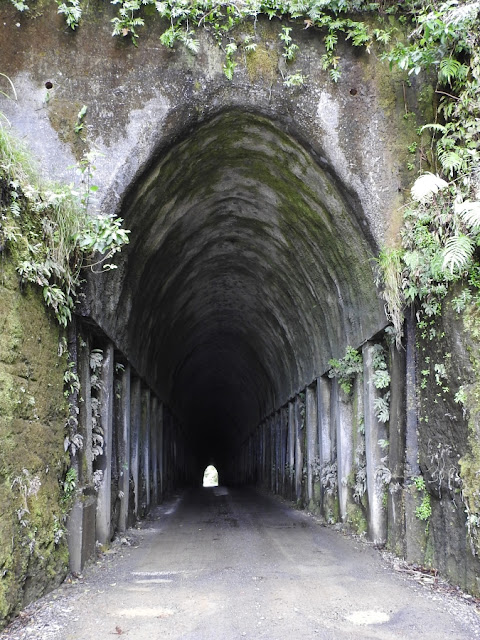A pack track was all that originally joined Strathmore and Makahu, a community that was settled in 1896. By 1902, a dray road was completed to replace this, but it was harsh, and the route over the hill was seen as a formidable obstacle. The erection of the Makahu Co-operative Dairy Factory a few years later embellished the need for a better access route for the produce to be able to be easily carried out.
In 1907, this was dealt to with the building and opening of the Makahu (or Brewer Road) Tunnel. The settlers worked hard, making full use of picks, shovels, wheelbarrows and explosives to eliminate the steep grade. People protested that the tunnel had been built too near the top of the hill to be at all worthwhile. However, the 166 metre tunnel made the journey more than 3km shorter, and saved travelers from battling the windy hill route.
The tunnel was originally made out of an interesting construction of wood, with a timber lining. However, by 1919 the wood had rotted through and the tunnel collapsed at the Makahu end. It was closed for two years while work was done to re-line the tunnel with more solid concrete pillars to ensure no further cave-ins were possible.
Throughout the years, the locals have held numerous impromptu "parties" inside the tunnel, which occasionally forces travellers to join in, or wait until the end to get through.
Observing the Makahu tunnel today, one would be able to see where the floor was lowered, and would note the small orange stalactites drooping from the ceiling. The tunnel is perhaps one of the most attractive tunnels in Taranaki, being strong-walled and perfectly shaped. It is a great feature on this rural road, and is well worth the journey to see it.
In 1998 a major upgrade of the tunnel was carried out by contractor Mac Mackenzie and his team. This had a total cost of $500,000 and included lowering the tunnel floor by 1.4 metres to give triple-deck stock trucks access to the road, installing new support struts, and strengthening the tunnel soffit with 150mm of reinforced concrete.
The upgrade took a total of four months, and was reopened with a ribbon being cut by locals Jim Hopkirk and Danica Wood (descendents of settlers who protested the delay in fixing the tunnel in 1920) on 22 July 1998.
Today, the tunnel acts as an access point to the Makahu and Puniwhakau communities, the Te Wera Forest, Aotuhia Station, the "Bridge to Somewhere" and a large proportion of the Whanganui National Park, including the Matemateaonga Walkway.
https://terangiaoaonunui.pukeariki.com/story-collections/taranaki-tunnels/makahu-tunnel-1907/









.JPG)




























